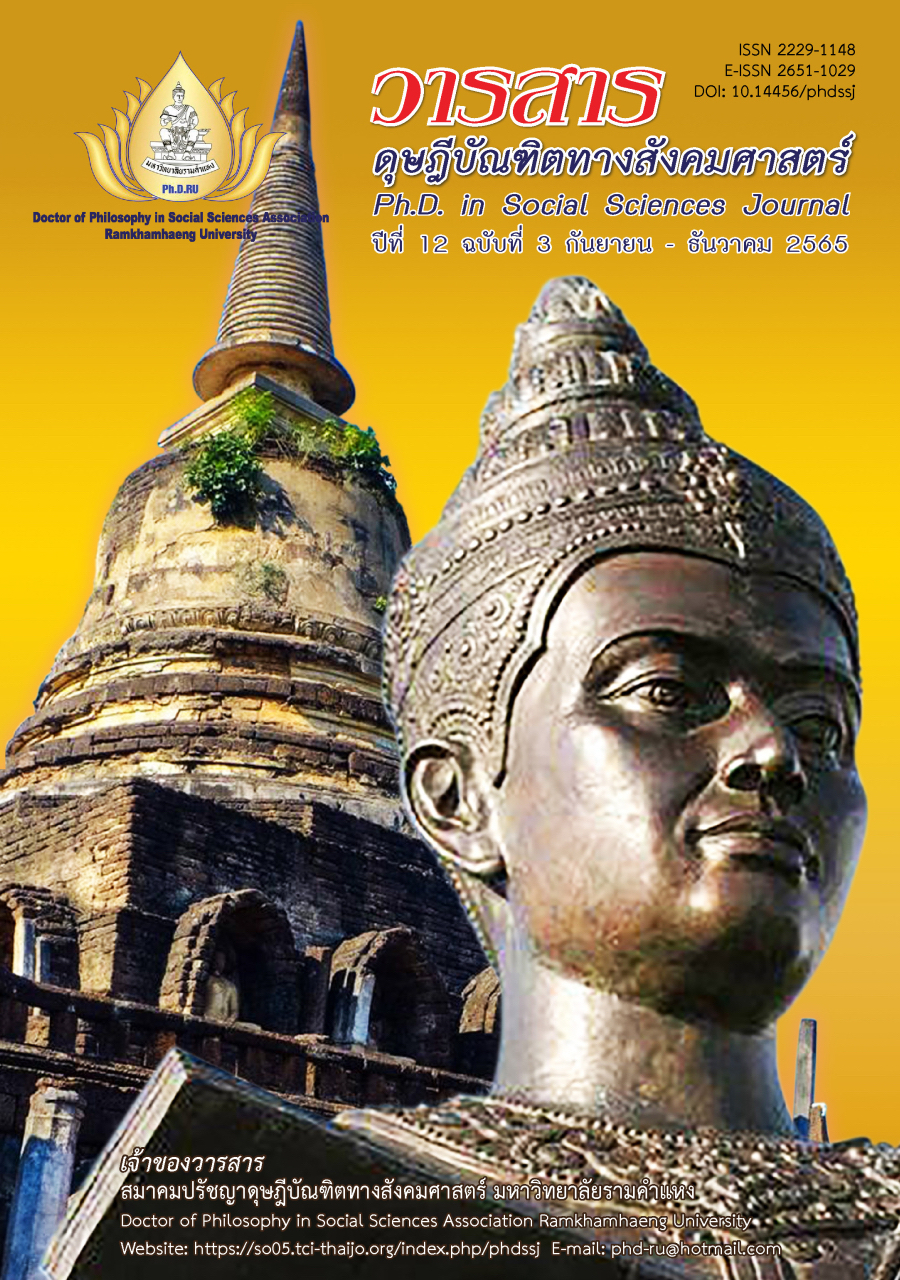เครื่องสำอางออร์แกนิคของผู้หญิงเจนเนอร์เรชั่นวาย กับการตลาดออนไลน์ที่ได้รับความนิยม
Main Article Content
บทคัดย่อ
บทความวิชาการนี้มีวัตถุประสงค์เพื่อวิเคราะห์การนำกลยุทธ์ทางการตลาดเชิงเนื้อหามาใช้ร่วมกับสื่อดิจิทัลและสื่อสังคมออนไลน์ในกลุ่มผู้หญิงเจนเนอร์เรชั่นวาย โดยนำแนวคิดเกี่ยวกับเจนเนอร์เรชั่นวายกับสื่อออนไลน์ แนวคิดเกี่ยวกับเครื่องสำอางออร์แกนิคบนสื่อออนไลน์ และแนวคิดเกี่ยวกับการตลาดเชิงเนื้อหาเป็นกรอบในการวิเคราะห์
ผลการวิเคราะห์ พบว่า เทคโนโลยีทางด้านความงามเข้ามามีบทบาทสำคัญในชีวิตประจำวัน เนื่องจากการให้ความสำคัญกับรูปร่างหน้าตามากขึ้น จนกลายเป็นค่านิยมของคนส่วนใหญ่ในสังคม ทำให้เกิดการแข่งขันด้านธุรกิจความงาม ขณะที่เครื่องสำอางออร์แกนิคกำลังได้รับความนิยมและขยายตัวมากขึ้นเช่นกัน จากกระแสรักสุขภาพโดยเฉพาะในกลุ่มผู้หญิงเจนเนอร์เรชั่นวายซึ่งเป็นช่วงวัยที่เริ่มมีกำลังซื้อ การตลาดเชิงเนื้อหาจึงเป็นปัจจัยสำคัญสู่ความสำเร็จของผู้ประกอบการเครื่องสำอางออร์แกนิค เนื่องจากเป็นวิธีการสื่อสารที่สามารถผลักดันให้สินค้าเข้าไปอยู่ในความคิดแรกของผู้บริโภค เพื่อตอบสนองความต้องการของผู้บริโภค เป็นการเพิ่มศักยภาพการแข่งขันทางการตลาดออนไลน์ได้อย่างมีประสิทธิภาพ
Article Details

อนุญาตภายใต้เงื่อนไข Creative Commons Attribution-NonCommercial-NoDerivatives 4.0 International License.
บทความวิชาการ บทความวิจัย และบทวิจารณ์หนังสือในวารสารดุษฎีบัณฑิตทางสังคมศาสตร์ เป็นความคิดเห็นของผู้เขียน มิใช่ของคณะผู้จัดทำ และมิใช่ความรับผิดชอบของสมาคมปรัชญาดุษฎีบัณฑิตทางสังคมศาสตร์ มหาวิทยาลัยรามคำแหง (กรณีการทำวิจัยในมนุษย์ ผู้วิจัยต้องผ่านการอบรมจริยธรรมการวิจัยในมนุษย์ และนำหลักฐานมาแสดง)
เอกสารอ้างอิง
Baltes, L. P. (2015). Content marketing – The fundamental tool of digital marketing. Economic Sciences, 8(2), 111-118.
Chaffey, D., Mayer, R., Johnston, K., & Ellis-Chadwick, F. (2000) Internet marketing, strategy, implementation and practice. Prentice Hall.
Cunningham, L. F., Gerlach, J. H., Harper, M. D., & Young, C. E. (2005). Perceived risk and the consumer buying process: Internet airline reservations. International Journal of Service Industry Management, 16(4), 357-372.
Electronic Transactions Development Agency. (2020). Report of internet user behavior survey in Thailand 2018. Author. [In Thai]
Engeln-Maddox, R., & Miller, S. A. (2008). Talking back to the media Ideal: The development and validation of the critical processing of beauty images scale. Psychology of Women Quarterly, 32(2), 159-171.
Fishbein, M., & Ajzen, I. (1975). Belief, attitude, intention, and behavior: An introduction to theory and research. Addison-Wesley.
Géci, A., Krivošíková, A., Nagyová, E., & Cagáňová, D. (2020). The influence of lifestyle on consumer behavior and decision making in research aimed at protein bars. Potravinarstvo Slovak Journal of Food Sciences, 14, 318–327.
Gunelius, S. (2011). Content marketing for dummies. John Wiley & Sons.
Hsiao, K., Chuan-Chuan Lin, J., Wang, X., Lu, H., & Yu, H. (2010). Antecedents and consequences of trust in online product recommendations: An empirical study in social shopping. Online Information Review, 34(6), 935-953.
Husnain, M., Rehman, B., Syed, F., & Akhtar, M. W. (2019). Personal and in-store factors influencing impulse buying behavior among Generation Y consumers of small Cities. Business Perspectives and Research, 7(1), 92-107.
Kaewchai, S. (2014). Motivating factors for purchasing stem cell cosmetics of consumers of Generation Y. Business Journal Review, 6(1), 21-35. [In Thai]
Kujur, F., & Singh, S. (2017). Engaging customers through online participation in social networking sites. Asia Pacific Management Review, 22(1), 16-24.
Kyu Kim, B., Zauberman, G., & Bettman, J. R. (2012). Space, time, and intertemporal preferences. Journal of Consumer Research, 39(4), 867-880.
Lane, A., & Kent, M. L. (2018). Dialogic engagement. In K. A. Johnston & M. Taylor (Eds.), The handbook of communication engagement (pp. 61-72). John Wiley & Sons.
Leonard, L. N. K., & Jones, K. (2014). Consumer-to-Consumer ecommerce: Acceptance and intended behavior. Communications of the IIMA, 14(1), 1-21.
Leopraphai, B. (2014). Thai population, past – present – future. Mahidol University, Institute for Population and Social Research. [In Thai]
Limpornprom, K. (2016). Health, how can we do that?. The Scene Interbook. [In Thai]
Lu, Y., Zhao, L., & Wang, B. (2010). From virtual community members to C2C e-commerce buyers: Trust in virtual communities and its effect on consumers’ purchase intention. Electronic Commerce Research and Applications, 9(4), 346-360.
Lueangpiansamut, J. (2019). Generation of hopelessness. Praew. [In Thai]
Marbach, J., Lages, C., Nunan, D., & Ekinci, Y. (2019). Consumer engagement in online brand communities: The moderating role of personal values. European Journal of Marketing, 53(9), 1671-1700.
Martin, S. S., & Camarero, C. (2008). Consumer trust to a web site: Moderating effect of attitudes toward online shopping. Cyberpsychology, Behavior, and Social Networking, 11(5), 549-554.
Meenin, C. (2014). Behavior of buying/using cosmetics imported from Japan in Bangkok. Master Thesis of Business Administration, Dhurakij Pundit University. [In Thai]
Ministry of Digital Economy and Society. (2019). Report of the survey of internet usage behavior in Thailand in 2019. Author. [In Thai]
Ministry of Digital Economy and Society. (2020). Thailand internet behavior survey 2020. Author. [In Thai]
Mistry, N. (2017). Guidelines for formulating anti-pollution products. Cosmetics, 4(57), 1-16.
Narang, U., Yadav, M. S., & Rindfleisch, A. (2022). The “idea advantage”: How content sharing strategies impact engagement in online learning platforms. Journal of Marketing Research, 59(1), 61-78.
Rese, A., Schlee, T., & Baier, D. (2019). The need for services and technologies in physical fast fashion stores: Generation Y’s opinion. Journal of Marketing Management, 35(15-16), 1437-1459.
Saleh, K. (2016). 13 content marketing metrics to track for optimum conversions. Retrieved from https://martech.org/13-content-marketing-metrics-need-track-optimum-conversions
Salonen, V., & Karjaluoto, H. (2016). Web personalization: The state of the art and future avenues for research and practice. Telematics and Informatics, 33(4), 1088-1104.
Steimle, J. (2014). What is content marketing?. Retrieved from https://www.forbes.com/sites/joshsteimle/2014/09/19/what-is-content-marketing/?sh=533ab70310b9
Teo, T. S. H., & Liu, J. (2007). Consumer trust in e-commerce in the United States, Singapore and China. Omega, 35(1), 22-38.
Thongprapan, K. (2009). Factors affecting the decision to buy imported cosmetics from the Republic of Korea of women in Bangkok. Master Independent Study of Economics. Thammasat University. [In Thai]
Valkeneers, G., & Vanhoomissen, T. (2012). Generations living their own life: The differences in lifestyle and consumer behaviour between busters and baby boomers. Journal of Customer Behaviour, 11(1), 53-68.
Wimulachat, R. (2017). Study of marketing strategies for organic products affecting consumers’ buying decisions in Bangkok: A case study of beauty and body care products. Master Independent Study of Business Administration, Bangkok University. [In Thai]


